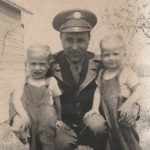Hermespand Bridgehead
This short, but rare personal account shows the German viewpoint of the battle fought for the Hermespand bridgehead in early February 1945. As the Americans had took the village of Hermespand by surprise in the early hours of February 9, elements of the 8th US Infantry Regiment had crossed the Prüm river and had set foot in the dense Weinsheimer Hardt woods where they formed a bridgehead over the Prüm river. Expanding the bridgehead started in the afternoon of February 9th, and by nightfall the Americans were well atop of hill 627 in the Weinsheimer Hardt woods. With this situation being a serious threat to the Germans, all available resources were sent into the battle to throw the Americans back to the west side of the Prüm river as soon as possible. As German troops and armor assembled in the area of Weinsheim and Dausfeld, a counterattack aimed at Hermespand bogged down on the 9th of February. The assembled troops in Weinsheim were ill prepared and the armor thrust from Dausfeld was left stuck in the mud. As the American companies strengthened their positions during the night of 9/10 February, more German reinforcements came to the scene. One of them was Theo Keilen, from Wissmannsdorf in the Eifel, the following story was told by him to Klaus Ritter who published this small story in the Landkreis Bitburg-Prüm Heimatkalander of 1993:
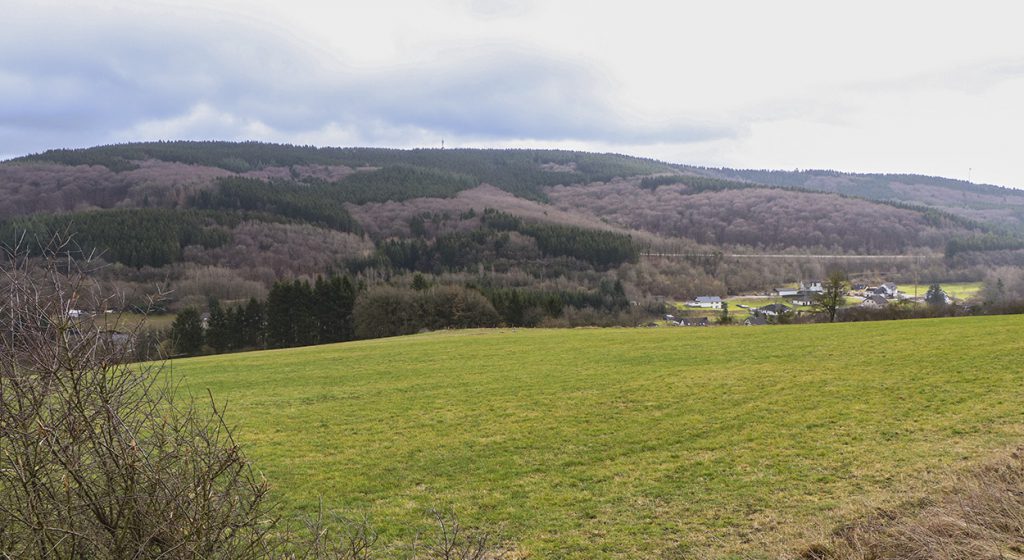
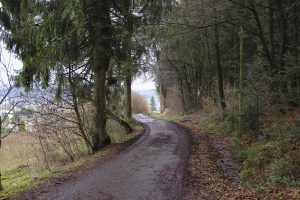
“After a long march in the night of February 9/10 we arrived in Weinsheim where we slept for a few hours in the basement of a house in the northern part of town. The headquarters of our small unit was positioned in “Haus Alff” from where the counterattack was to be led. In the hours of darkness, we received our rations, and our sparse ammunition supply. Every soldier was given 10 rounds of rifle ammunition, and a Panzerfaust each. Under cover we passed through the last houses of Weinsheim and assembled ourselves in a stone quarry in the direction of the hunter’s cabin. Quietly orders were given, and as we moved slowly towards our objective, we walked through the grass left and right of the road to avoid the noise our heavy hobnailed boots would make on the hard underground. For the same reason I also strapped my entrenching tool tight to my leg, so no loose equipment would make any sound and betray our attack.
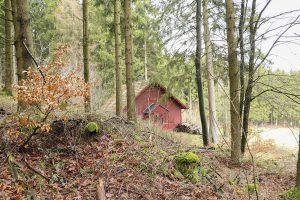
When finally the sign to attack was given, we stormed down the slope of the ridge where we were received by strong small arms fire. Some of the Americans were seen firing from the crown of the trees, others fired from shallow foxholes they had dug in the hard and rocky ground. Time to time the red tail of a fired Panzerfaust lit up the darkness of the forest. It took not long before we could hear the first wounded screaming for a medic. I stepped over some comrades who had already got it, loaded my rifle, aimed and fired several times while I jumped from tree to tree. The American resistance grew stronger and stronger as we advanced, their strong defensive fire formed an impregnatable wall which we couldn’t penetrate. When we moved to our right, where things died down a bit, we noticed that already a large number of men were missing.
After our officers and squad leaders discussed a new strategy, a new effort was made to recapture the hill. When we approached the top of the ridge from another direction we had to cross a steep escarpment which provided us no cover. In groups of three and four we leaped across the open terrain under direct fire of the Americans. When we came across countless of bodies had been left behind laying in the snow.
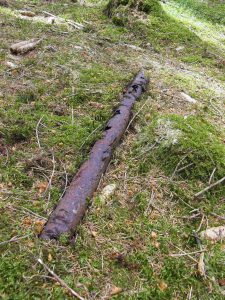
When we had reached the cover of the woods all of a sudden, a strike had hit my left leg, and I collapsed immediately. My Panzerfaust rolled over the forest floor and I felt how the warm blood slowly ran into my shoe. When a medic came and started to cut open my trousers and dress my wound, I lost consciousness. When later in the afternoon I came awake I found myself on the basement floor of a house in Weinsheim. I heard that our attack had been repulsed by the Americans.”
Although this particular German counterattack had been repulsed, the Americans laid seemingly lost in the dense woods of Weinsheimer Hardt. Strong German artillery barrages and small counter attacks prevented the Americans from sending reinforcements and supplies to the two companies isolated on hill 627. Around midnight, an order was given by the 4th Infantry Division commander to evacuate all troops east of the Prüm river in the vicinity of Hermespand. Under the cover of darkness, what remained of the two companies defending the hill descended towards Hermespand where trucks awaited to bring them towards Gondenbrett for a well-earned period of rest. As soon as the Americans had left their positions, the Germans took over the woods of Weinsheimer Hardt and dug in directly opposite Hermespand, where they manned their positions throughout the remainder of February.
Comments are closed.

